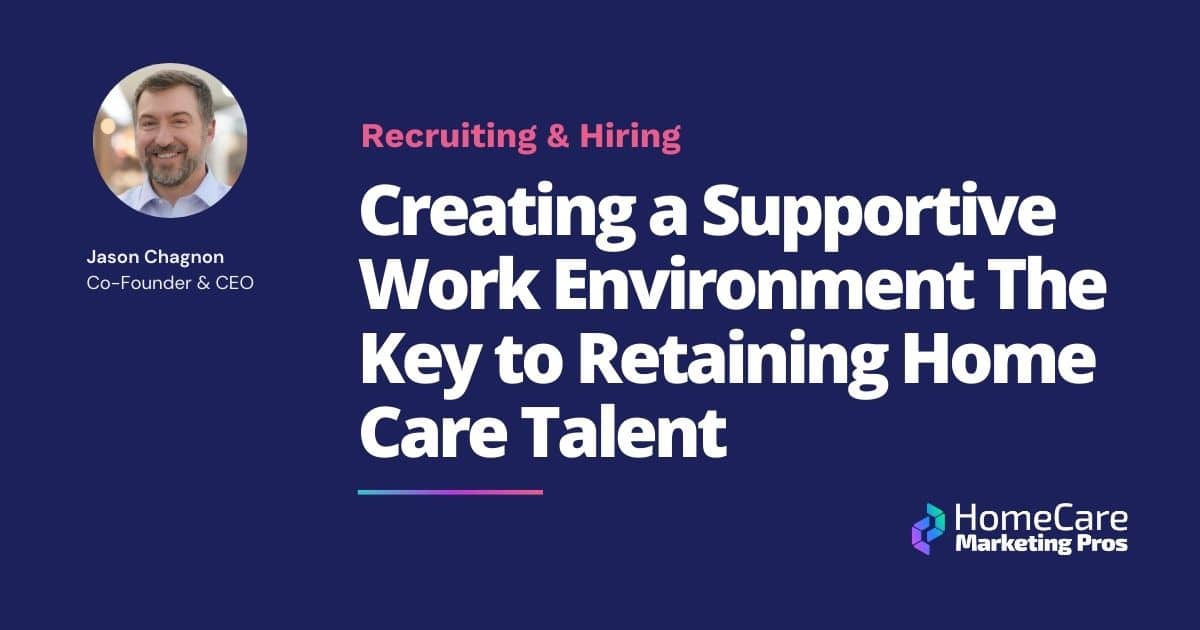Many new home care agency owners are hit with “sticker shock” when they receive their first quote for workers’ compensation insurance. How could it possibly cost so much? Well, the reality of caregiving is the work is highly physical and injuries are far too common. Furthermore, the average work comp claim is $39,424 according to data from 2015-2016.
While there’s no way to eliminate caregiver injuries, in-home care companies can take active measures to mitigate the risks. Agencies that work to reduce claims not only foster better work environments for employees but also greatly improve profitability.
Here are 6 actionable ways to immediately reduce work comp claims and lower operational costs:
-
Invest in Caregiver Training
– Most home care agencies have some form of caregiver training or “orientation.” However, many lack a dedicated focus on issues of work-related injuries. Any time spent on education that helps to reduce work comp claims will pay in spades!
Some companies specialize in leading training or creating a customized curriculum for agencies. But top areas of focus usually include proper lifting techniques, safe patient transfer practices, fall risk identification and ways to prevent transmission of communicable diseases.
-
Provide Safety Equipment
– Basic supplies can go a long way in preventing work comp claims. These items typically aren’t expensive or fancy and most often include latex gloves and gait belts. All home care agencies should provide essential safety tools free of charge to caregivers (or bill clients).
Some agencies may even consider investing in bigger safety tools such as Hoyer lifts. These devices can be acquired for a few hundred dollars and aid in safe patient transfers. Transfer-related back injuries are very common among caregivers and can be debilitating and costly.
-
Moderate Work Schedules
– Many caregivers will accept any-and-all schedules offered to them. Understandably, people work to earn money. It makes sense that some people want to clock as many hours as possible, but home care agency managers have a duty to moderate that instinct.
Overly-exhausted caregivers are far more likely to suffer work-related injuries that range from falls to patient transfer accidents. Even worse, clients are often victims too. Supervisory due diligence can prevent devastating injuries and also save home care agencies hundreds of thousands of dollars.
-
Set Client Expectations
– Many home care clients don’t appreciate the logistical realities of caregiving, which is understandable. However, agency representatives must set expectations based on their experience and knowledge. “The customer is always right,” doesn’t hold true in matters of worker and client safety.
The previously-addressed issue of unreasonable schedules is often complicated by clients who are particularly fond of one caregiver. It’s up to the home care representative to explain schedule limitations and dangers associated with exhausted caregivers. Sometimes companies must simply say “no,” and inform their client that there’s no choice but to add another caregiver to the rotation.
Another common safety issue with regard to client expectations involves patient transfers and fall risk. Some clients are opposed to devices like Hoyer lifts, as they find them “clinical” and unbecoming in their homes. Unfortunately, agency representatives must ultimately choose safety over client satisfaction and do their best to explain the decision.
-
Act Fairly and Respectfully
– It’s amazing how much of a difference attitude and relationships make when it comes to preventing caregiver injuries. First, managers who respect caregiver schedule limitations and preferences help to reduce injuries related to physical exhaustion and mental distraction. Second, these proactive leaders also create goodwill among workers that encourages cooperation in the unfortunate event of an injury.
Only a small percentage of worker injuries are fabricated. But, data suggests that the level of treatment and associated rehabilitation costs can vary greatly. Claims that are resolved amicably without lawyers are typically far less costly than those rooted in hostility.
-
Conduct Regular Home Assessments
– Home care agencies have different protocols for starting service with a new client. Many conduct a home assessment, but some don’t. Even agencies that do evaluate the home initially may not schedule follow-up visits, and environments can change over time.
Most home care agencies are limited on time, but it’s well worth the effort to conduct a proper home safety evaluation for every client before start care. It’s also prudent to schedule regular check-in visits during the entire course of service. Unsafe environments are risky to both caregivers and clients. Common dangers include unsafe sanitary conditions, dangerous piles of clutter, blocked pathways and unsecured weapons.
Work-Related caregiver injuries must be taken very seriously given the human and financial costs. While certain risks are rather obvious, there are also significant unintended consequences that must be considered. Injuries can affect both caregivers and clients. And, they can manifest in many ways ranging from back injuries to contraction of a communicable infection.
Responsible home care agencies understand the costs of training and prevention are minimal compared to physical injuries and massive work comp claims. If you’re a caregiver agency seeking more business, be sure to also consult with the industry’s best marketing agency!














